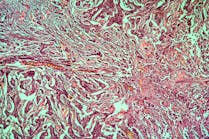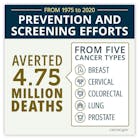A 10-year follow up study of nearly 2,500 U.S. men who received prostate cancer treatment will help inform decision making in terms of treatments and side effects for a diverse population.
The CEASAR (Comparative Effectiveness Analysis of Surgery and Radiation for Localized Prostate Cancer) study, coordinated by Vanderbilt University Medical Center (VUMC), is a multisite research study conducting long-term follow up on men who were diagnosed with localized prostate cancer between 2011 and 2012.
Researchers have now followed the same cohort of men for more than a decade, administering a series of questionnaires regarding urinary, bowel, sexual and hormone therapy-related side effects of treatment. The newly released JAMA study builds upon previous publications of three-year and five-year results.
The study includes nearly 2,500 patients: 1,797 non-Hispanic white men, 350 non-Hispanic Black men, 184 Hispanic men, 77 Asian men and 33 “other” races.
Patients were classified based on cancer risk into two categories: favorable prognosis and unfavorable prognosis, which is important because unfavorable prognosis patients receive more intensive treatments.
The favorable-prognosis group chose either:
- Active surveillance, an observation strategy in which treatment is only used if the cancer gets worse over time.
- Nerve-sparing prostatectomy, surgical removal of the prostate with attempt to protect nerves that run alongside the prostate in hopes of minimizing the impact of surgery on erectile function.
- External beam radiation therapy (EBRT), a common therapy that uses daily doses of radiation to destroy cancer cells.
- Low-dose-rate brachytherapy, a type of radiation therapy involving implantation of radioactive “seeds.”
The unfavorable-prognosis disease group chose either:
- Prostatectomy, which is surgery to remove the prostate.
- External beam radiation therapy with androgen deprivation therapy (ADT), which is radiation in combination with an anti-hormone therapy used to reduce levels of androgen hormones to enhance the effectiveness of radiation.
Findings:
- Surgery with radical prostatectomy was associated with an increased risk of urinary incontinence over 10 years compared to other treatments, irrespective of cancer risk. Fourteen to 25% of men who underwent surgery to remove the prostate reported bothersome leakage 10 years after treatment, as compared with 4-11% of men who underwent EBRT.
- Patients with favorable cancer prognoses experienced worse sexual impairment for the first three to five years following surgery with radical prostatectomy compared to other treatment options. Sexual function scores were similar across treatments after five years, which may reflect age-related decline, gradual decline associated with radiation, and conversion from active surveillance to treatment.
- There were no significant differences in sexual function impairment between surgery with radical prostatectomy and radiation with ADT for patients with unfavorable prognosis cancer.
- Radiation therapy combined with hormone therapy (ADT) was associated with slightly worse bowel and hormone functions at 10 years for patients with unfavorable prognosis prostate cancer.





